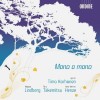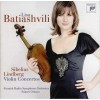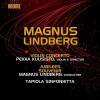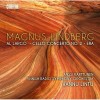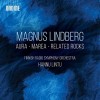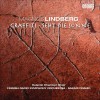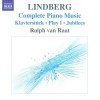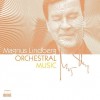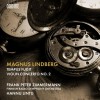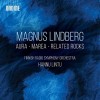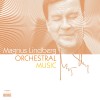| 国家: | 芬兰 |
| 期间: | Spectralism |
传记
Magnus Lindberg (born 27 June 1958, Helsinki) is a Finnish composer and pianist. He was the New York Philharmonic's composer-in-residence from 2009 to 2012 and is the London Philharmonic Orchestra's composer-in-residence from the beginning of the 2014/15 season.
Lindberg studied at the Sibelius Academy in Helsinki under Einojuhani Rautavaara and Paavo Heininen, beginning with piano. He attended summer courses in Siena (with Franco Donatoni) and Darmstadt (with Brian Ferneyhough). After graduating in 1981, he travelled widely in Europe, attending private studies with Vinko Globokar and Gérard Grisey in Paris, and observing Japanese drumming and punk rock in Berlin.
Lindberg's juvenilia include the large orchestral work Donor, composed at age 16. Quintetto dell’Estate (1979) is generally held to be Lindberg's first opus. His first piece performed by a professional orchestra was Sculpture II in 1982, the second part of a trilogy whose first and third sections were long unwritten. His first great success came with "Action-Situation-Signification" (1982), the first work in which he explored musique concrète. This piece was written for and premiered by the new-music ensemble Toimii ("It Works" in the Finnish language), which Lindberg founded during the summer of 1980. Also around the same period, Lindberg founded an informal grouping known as the Ears Open Society including Lindberg and his contemporaries Eero Hämeenniemi, Jouni Kaipainen, Kaija Saariaho and Esa-Pekka Salonen.[1] Lindberg is a trained pianist and has performed several of his works as part of Toimii.
Kraft (1983–85), another piece written for Toimii, is Lindberg's largest work to date, with harmonies of over 70 notes and a meter-high score. It uses traditional instrumentation as well as percussion on scrap metal and spoken word. After finishing it Lindberg found it hard to compose, and with the exception of 1986's Ur, which he called "Kraft in chamber form", he entered a creative hiatus that was to last for over two years. During this time he was not only rethinking his style but also recovering from a tropical disease contracted during travel in Indonesia.
Kraft made use of a chaconne-type structure where the progression of the piece is based on a repeated chain of chords. It was this idea that served as the basis for Lindberg's next style. He returned with an orchestral trilogy consisting of Kinetics (1988), Marea (1989–90), and Joy (1990). Though Lindberg became less interested in electronic manipulation of sound, he continued to explore the possibilities of compositional software, and Engine displays complex computer-generated counterpoint. Since Joy, Lindberg has shown a gradual refining of his style, orchestrations and harmonies. This showed itself first in the work for chamber ensemble, Corrente (1992) (and its subsequent orchestral version, Corrente II from the same year), and Duo Concertante (1992). In these works, Lindberg showed influences ranging from Pierre Boulez and Tristan Murail to Igor Stravinsky and Minimalism. His symphonic work Aura (1994) reflects a newer, more eclectic style.
Since then, Lindberg has built upon these developments, further refining his style, which now leans toward a type of new tonality hinted at in works such as Joy and Aura. This development has culminated in one of his most popular scores to date, his Clarinet Concerto (2002), which has a folk-like melody and rich orchestration.
He has received a number of composition prizes, including the Prix Italia (1986), the UNESCO International Rostrum of Composers (1986), the Nordic Council Music Prize (1988) for Kraft, and the Royal Philharmonic Society Prize for large-scale composition (1992).
Lindberg became the new composer-in-residence at the New York Philharmonic with the 2009-2010 season, at the invitation of the incoming music director Alan Gilbert.[2] The September 2009 opening night gala of the Philharmonic, which was Gilbert's debut as music director, featured a well-received new work by Lindberg, EXPO.[







